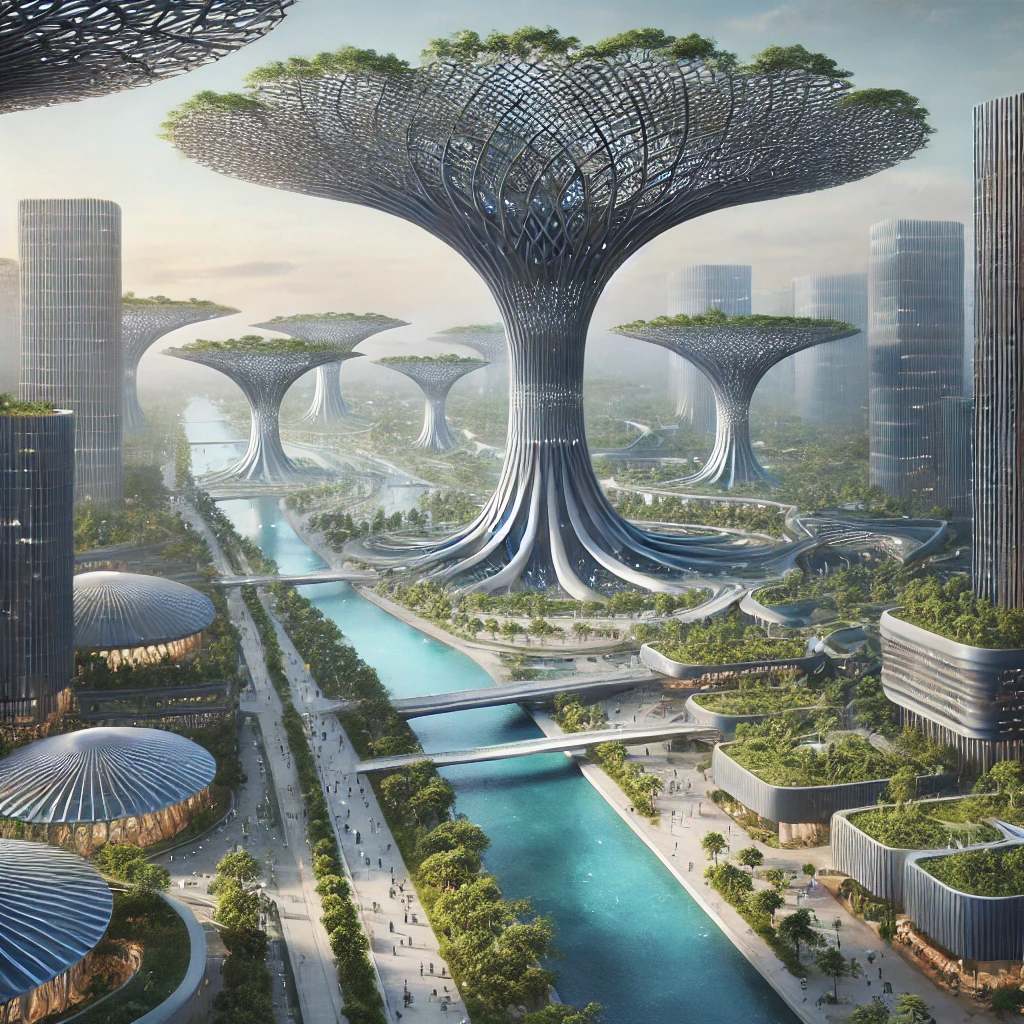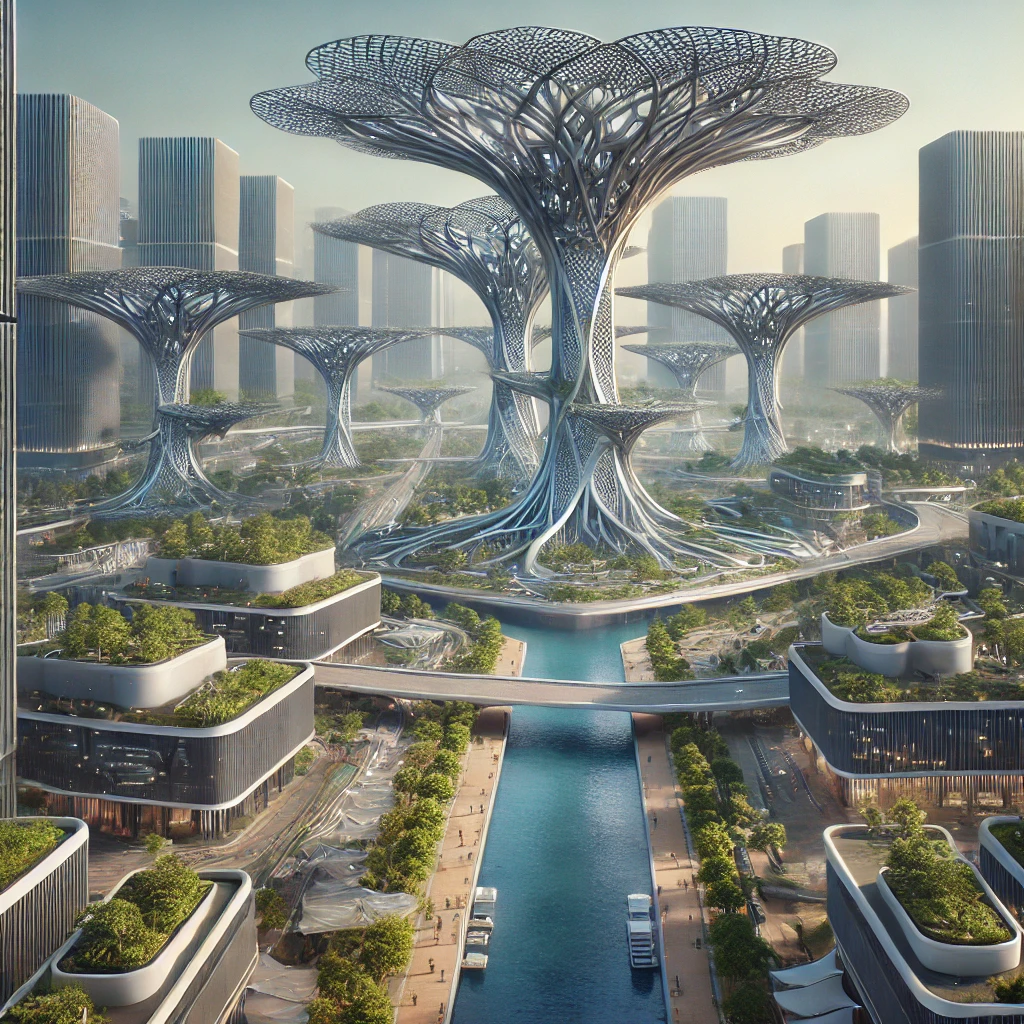

Introduction:
In the ever-evolving world of architectural innovation, the integration of futuristic design and sustainability has become the cornerstone of modern cities. The two visuals presented here depict a groundbreaking example of this trend — a vertical forest city that embodies the fusion of cutting-edge technology, biophilic design, and urban sustainability. This article explores the profound elements of this architectural marvel, shedding light on its inspiration, design features, and its potential impact on future urban planning.
Urban Forest City: A New Paradigm of Sustainable Development
The concept of a vertical forest city, as illustrated in these images, revolves around creating an interconnected urban space where towering structures emulate the organic forms of nature. Each “tree-like” structure serves as a multi-functional hub, providing space for residential, commercial, and recreational activities. The expansive canopies spread out like giant leaves, creating an elevated green ecosystem that not only offers shade but also functions as a natural air purifier. This harmonious blend of architecture and greenery redefines the traditional skyline, emphasizing the role of architecture in restoring ecological balance within urban environments.
Design Features: Merging Art and Science

1. Organic Architecture with Structural Elegance:
The buildings rise like colossal trees, with intertwining lattice-like branches that support lush gardens. The design is heavily influenced by organic forms, with fluid shapes and curved surfaces that mimic natural patterns. These structures symbolize an architectural shift towards “biomorphic design,” where buildings are modeled after living organisms to seamlessly integrate with the environment.
2. Elevated Greenery and Vertical Parks:
One of the standout features is the elevated garden platforms, which serve as vertical parks at varying levels. These platforms not only offer breathtaking views of the surrounding cityscape but also encourage biodiversity by supporting a wide range of plant species. Each platform is designed to host trees, shrubs, and flowers, enhancing the microclimate and promoting natural cooling.
3. Waterways and Skybridges:
The incorporation of a network of canals and waterways reflects an emphasis on sustainable water management. The presence of skybridges connecting the structures creates a dynamic pedestrian experience, fostering a sense of connectivity while reducing the need for vehicular traffic. This design encourages walkability and offers a unique vantage point for observing the city from above.
4. Energy Efficiency and Smart Integration:
The futuristic architecture goes beyond aesthetics, incorporating smart technology for energy efficiency and resource management. Solar panels integrated into the structures’ surfaces, along with wind turbines atop the canopies, contribute to a self-sustaining ecosystem. These energy solutions minimize the carbon footprint, setting a benchmark for green building practices.
Impact on Future Urban Planning
As urban populations continue to grow, traditional cities face challenges related to overcrowding, pollution, and diminishing green spaces. This visionary architectural design offers a glimpse into a future where urban development prioritizes ecological sustainability and human well-being. Vertical forest cities can potentially revolutionize how cities are planned, shifting the focus from horizontal expansion to vertical, integrated ecosystems that coexist with nature. This model addresses urban challenges by providing green public spaces, improving air quality, and promoting social interaction in densely populated areas.
Conclusion: A Visionary Blueprint for Tomorrow’s Cities
The architectural marvel depicted in these visuals is more than just an aesthetic masterpiece; it is a symbol of what cities of the future could be — a seamless blend of technology, nature, and human ingenuity. By reimagining skyscrapers as towering forests, this design challenges conventional notions of urban development and sets a precedent for future architects to follow. As we look towards creating more resilient and sustainable cities, such visionary projects will play a crucial role in shaping the future of architecture.
